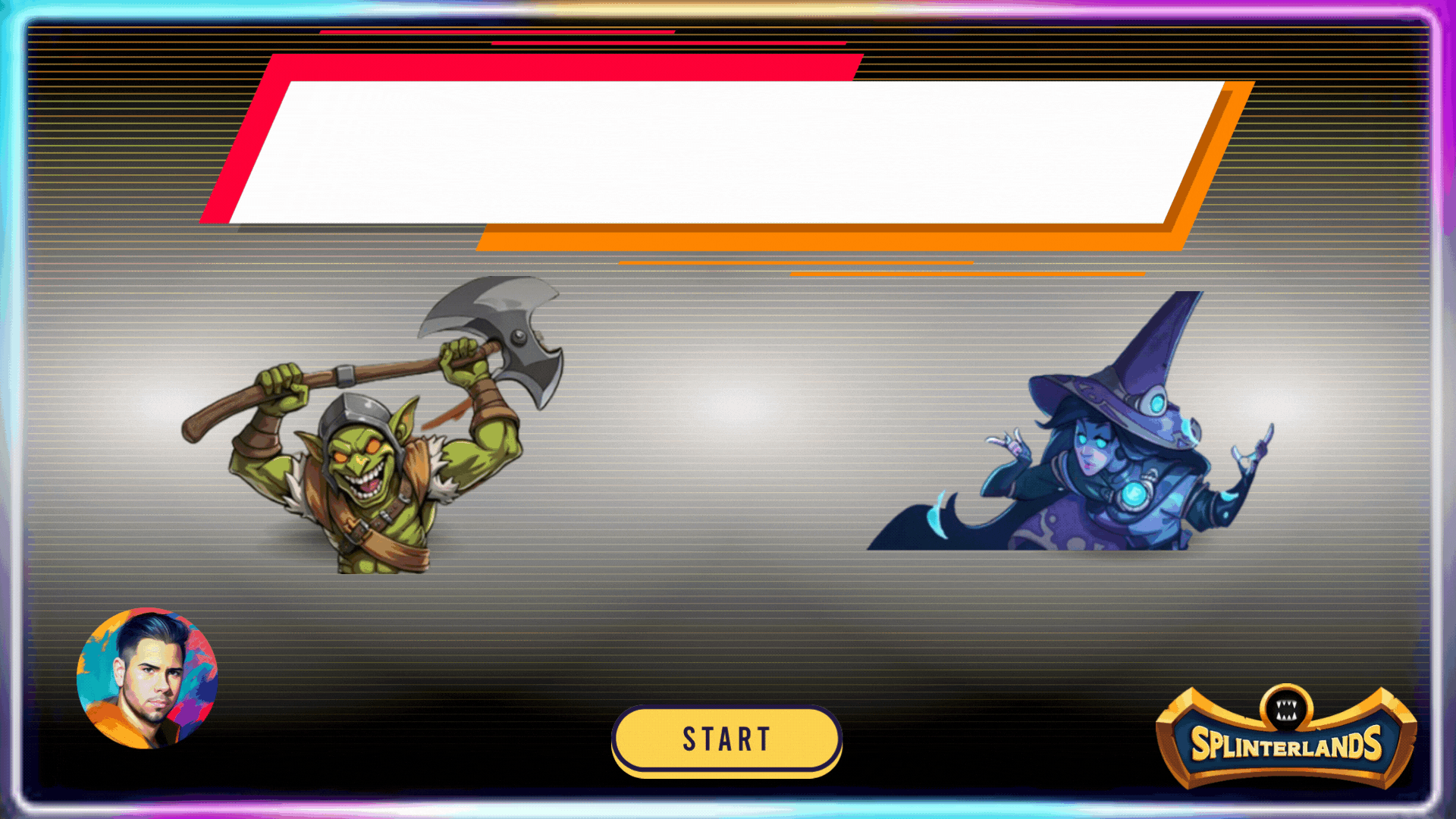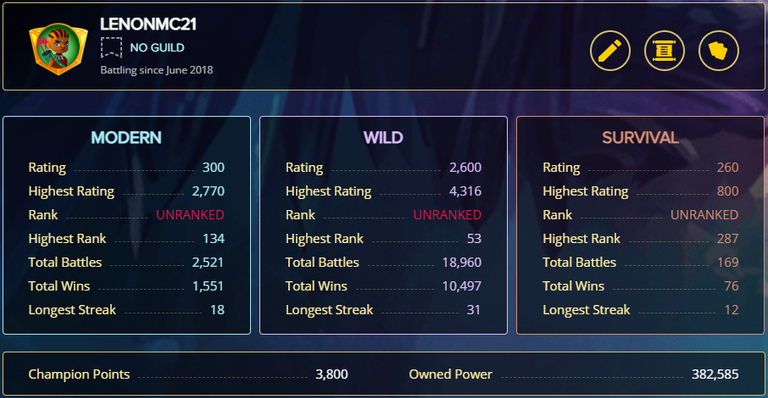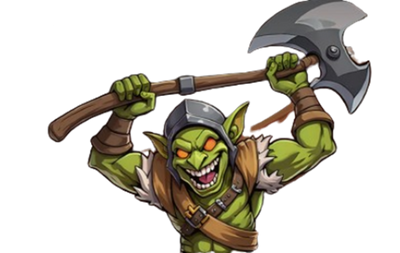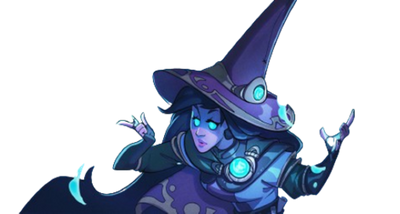Explaining all Splinterlands game modes in detail (Part 1) [ES-EN]

Cover created in Canva

He realizado muchas publicaciones a lo largo de mi viaje por Splinterlands, sin embargo, nunca he detallado a ciencia cierta cómo funcionan los diferentes modos de juego que componen todo el universo de este juego, si bien he dado guías y explicando aspectos básicos del funcionamiento de muchos de ellos, ya que me estoy dedicando a realizar especies de guías, es el momento de hacer una buena acerca de todos los formatos y modos de juego que existen para divertirte y por supuesto, ganar recompensas mientras lo haces.
Por supuesto, quizás esto me lleve varias publicaciones, o quizás puede hacerlo todo en una sola, no estoy seguro, ya que soy de los que les gusta escribir, y muchas veces suelo alargarme demasiado, por lo que, no se si podre hacerlo todo en un solo post, pero, quiero ser muy específico y detallista para que los más nuevos puedan comprender a fondo los temas, así que seguro me tomara más de una, así que, por lo pronto, en este post tratare de detallar todos los aspectos relacionados con los modos de juego en “Splinterlands” enfocados en las batallas, no incluiré el de “Lands”, ya que, a pesar de que también es un modo de juego, funciona completamente diferente, ademas incluiré en este primero post, aspectos fundamentales necesarios que todos deberían de conocer.
Pero, si quieres saber cómo funciona cada modo de juego que existe, deben de leer hasta el final esta publicación y las siguientes que vendrán, especialmente si eres nuevo o nueva, ya que conocerás los detalles de cada uno de ellos, los cuales tratare de resumir intentando que no se me escape nada. Esta es la primera parte y una de las más importantes, ya que abarcare la importancia y función de los activos que forman parte del ecosistema.

Fundamentos de Splinterlands (Comprender los activos y la progresión)

Antes de comenzar a detallar los modos de juego, con toda la información que quiero traerles, lo primero que deben de conocer especialmente si son nuevos en el juego, es comprender todos los activos más importantes de Splinterlands, sus componentes, funcionamiento y esos detalles importantes de la economía junto con sus mecánicas, ademas de conocer como estos influyen directamente en la progresión de este, así que, sin mas dilaciones, vamos con la información:

Activos del ecosistema de Splinterlands y su función
Splintershards (SPS):
 El SPS es el token de gobernanza del juego y el pilar fundamental que mueve toda la economía en su conjunto, ademas de ser el token nativo, también es el de recompensas, ya que los jugadores cada vez que ganan una batalla clasificada en los formatos (Moderno, Salvaje y Supervivencia) obtienen SPS en el proceso, ademas, la cantidad de SPS que gana esta vinculado a un multiplicador que aumenta o disminuye dependiendo de la cantidad de SPS en Staking que tenga el jugador, así que, mientras más SPS tengas, más podrás ganar por cada batalla ganada. Ademas, tiene otras funciones, pero, se las diré en su debido momento.
El SPS es el token de gobernanza del juego y el pilar fundamental que mueve toda la economía en su conjunto, ademas de ser el token nativo, también es el de recompensas, ya que los jugadores cada vez que ganan una batalla clasificada en los formatos (Moderno, Salvaje y Supervivencia) obtienen SPS en el proceso, ademas, la cantidad de SPS que gana esta vinculado a un multiplicador que aumenta o disminuye dependiendo de la cantidad de SPS en Staking que tenga el jugador, así que, mientras más SPS tengas, más podrás ganar por cada batalla ganada. Ademas, tiene otras funciones, pero, se las diré en su debido momento.Dark Energy Crystals (DECS):
 Esta es un token de utilidad dentro del ecosistema de Splinterlands, esta creado como un token estable donde, cada 1000 DEC tiene el valor de $1, este fue el primer token que se ganaba en los formatos antes que el SPS, pero, sus funciones han cambiado desde entonces, centrándose en funcionar como un activo de solo transacciones internas, como la compra de las cartas en el mercado, alquileres de tarjetas, imprescindible en las “Parcelas de Tierra”, compras de packs etc.
Esta es un token de utilidad dentro del ecosistema de Splinterlands, esta creado como un token estable donde, cada 1000 DEC tiene el valor de $1, este fue el primer token que se ganaba en los formatos antes que el SPS, pero, sus funciones han cambiado desde entonces, centrándose en funcionar como un activo de solo transacciones internas, como la compra de las cartas en el mercado, alquileres de tarjetas, imprescindible en las “Parcelas de Tierra”, compras de packs etc.GLINT:
 Este token es relativamente nuevo, y se obtiene también en el juego clasificado como el SPS ganando batallas y quedando en los tops de las tablas de las diferentes ligas. Este es un token intransferible, no tiene ningún valor, su única función o para lo que se utiliza, es para comprar objetos o Items en la “Tienda de Recompensas” del juego, se ganan como ya comenté, en los distintos formatos, aunque en el “Formato Moderno”, obtienes un bono del 50%, básicamente para animarte a jugar en el mismo.
Este token es relativamente nuevo, y se obtiene también en el juego clasificado como el SPS ganando batallas y quedando en los tops de las tablas de las diferentes ligas. Este es un token intransferible, no tiene ningún valor, su única función o para lo que se utiliza, es para comprar objetos o Items en la “Tienda de Recompensas” del juego, se ganan como ya comenté, en los distintos formatos, aunque en el “Formato Moderno”, obtienes un bono del 50%, básicamente para animarte a jugar en el mismo.
- Poder de Colección (CP):

Este no es un activo o token como tal, sin embargo, es una medida o métrica muy importante en todo el ecosistema, ya que representa el valor total de la colección de un jugador. Este CP se calcula en base al valor de quema en DEC de la colección de cartas de un jugador, ademas, es uno de los requisitos fundamentales para ingresar a ciertos torneos, puesto que, esto representa el nivel de inversión que posee un jugador, básicamente para evitar que algunos de bajo nivel no tengan la capacidad de jugar en un torneo con premios de cientos de dólares sin invertir en sus mazos, sea comprándolos o alquilándolos.
Sabiendo esto, ya tienen un paso adelantado para comprender los diferentes modos de juego. Sin esta información no podrían comprender de todo su funcionamiento, o recompensas.

Modos de juego clasificados (Formatos Frontier y Moderno)

Los modos de juego clasificado o el PvP, es como el pilar que sostiene la jugabilidad en Splinterlands, ya que cada uno de ellos ofrecen recompensas y progresión que se adaptan a todo tipo de jugador, por lo que, conocerlos es fundamental para saber en cual quieres desempeñarte primero, así que, en este post y 1ra parte de la serie, aquí abarcare los modos de juego (Frontier y Moderno):

Formato Frontier (El portal para nuevos jugadores)

El formato Frontier con tampoco tiempo de haber salido a la luz, es la puerta de entrada para todo nuevo jugador en Splinterlands, ya que no requiere de ninguna inversión inicial como el resto, siendo este completamente gratuito y de muy fácil acceso. El propósito o función de este formato es permitir a los nuevos jugadores conocer lo que es la mecánica del juego, ademas de construir un mazo desde cero sin una inversión.
Requisitos y progresión: Para desbloquear este formato y comenzar tu carrera como mago de batalla, lo primero que debes hacer, es completar el modo “Campaña”, el cual esta especialmente diseñado no solo para que conozcas las historia de Splinterlands y Praetoria, si no que aprendas todo lo básico sobre la jugabilidad, y donde ademas ganaras tus primeras cartas gratuitas que formaran parte de tu mazo con el cual batallaras en Frontier.
Cartas y Restricciones: En este formato solo se permite el uso de la nueva edición “Foundations”, la cual fue creada especialmente para el Formato Frontier y el modo Campaña, por lo que, no se pueden utilizar ninguna otra carta del resto de las ediciones, sí que pueden venderse y/o combinarse, pero solo con esta.
Recompensas: En te modo de juego las recompensas se centran en la adquisición de “Cartas” de la misma edición “Foundations”, realizar misiones diarias con la finalidad de que obtengas aun mas cartas, cofres diarios etc. No ganas SPS ni GLINT, algo que deben tener en cuenta.

Formato Moderno (El campo de batalla competitivo)

Este formato para muchos jugadores es el modo de juego principal para muchos, ya que representa todo lo nuevo que el juego puede traer, por ejemplo, nuevas cartas, habilidades, reglas, el META en su máxima expresión esta aquí. Ademas, es un Formato en donde no se permiten BOTS, por lo que el juego humano es el que predomina, una batalla aquí es muy real y solo hay estrategias pensadas por usuarios reales, convirtiendo este modo en un formato complejo.
Cartas permitidas: Este formato solo admite 2 SETS de cartas y siempre son las mas nuevas de todas las ediciones existentes, por ejemplo, justo ahora las 2 ediciones admitidas son “Rebellion y Conclave Arcana”, pero antes de que salieran “Conclave Arcana”, la que estaba allí era “Chaos Legion”.
Requisitos y Activos: En este formato para poder jugarlo y ganar recompensas, necesitas tener un “Libro de Hechizos” que tiene un costo de $10, ademas tiene un sistema de energía por cada batalla que se juega, la cual se recuera sola con el tiempo, pero, si quieres tenerlas de inmediato, poseen un costo. Con respecto a la progresión, en este modo depende de las cartas que poseas de las 2 ediciones mencionadas y tener una buena cantidad de SPS para ganar recompensas decentes.
Economía y Recompensas: Los jugadores en este formato por cada batalla de juego clasificado que ganen, obtienen SPS y GLINT como recompensa, ademas este modo tiene un Pool de recompensas determinado de SPS, pero que, a diferencial del formato salvaje, aquí las recompensas son mayores, puesto que, juegan muchos menos jugadores que en el Salvaje, ya que la competencia y la complejidad son más altas.

Consideraciones finales

Ya me he alargado demasiado en esta publicación, pero, creo que esta bastante completa para ser la 1ra parte, resaltando que, pude compartir los fundamentos claves del juego, sus activos y cómo funcionan con la progresión, algo bastante necesario para poder explicar los formatos y diferentes modos de juego.
Cualquier duda, pueden dejarla en los comentarios de este post, en la 2da parte estaré mas enfocado en explicar los formatos y/o modos que restan, así que atentos.
Nos vemos en el "Campo de Batalla"

I have made many posts throughout my journey through Splinterlands, however, I have never gone into detail about how the different game modes that make up the entire universe of this game work. Although I have provided guides and explained the basics of how many of them work, since I am dedicating myself to creating guides, it is time to do a thorough one about all the formats and game modes that exist for you to enjoy and, of course, earn rewards while doing so.
Of course, this may take me several posts, or maybe I can do it all in one, I'm not sure, since I'm one of those who likes to write, and I often tend to go on too long, so I don't know if I can do it all in one post, but I want to be very specific and detailed so that newcomers can fully understand the topics, so it will surely take me more than one. So, for now, in this post I will try to detail all aspects related to the game modes in "Splinterlands" focused on battles. I will not include "Lands" because, although it is also a game mode, it works completely differently. I will also include in this first post some fundamental aspects that everyone should know.
However, if you want to know how each game mode works, you should read this post and the following ones in their entirety, especially if you are new to the game, as you will learn the details of each one, which I will try to summarize without leaving anything out. This is the first part and one of the most important, as it covers the importance and function of the assets that form part of the ecosystem.

Splinterlands Basics (Understanding Assets and Progression)

Before I start detailing the game modes and all the information I want to share with you, the first thing you need to know, especially if you are new to the game, is to understand all the most important assets in Splinterlands, their components, how they work, and those important details about the economy and its mechanics, as well as how they directly influence the game's progression. So, without further ado, let's get started with the information:

Splinterlands ecosystem assets and their function
Splintershards (SPS):
 SPS is the game's governance token and the fundamental pillar that drives the entire economy as a whole. In addition to being the native token, it is also the reward token, as players earn SPS every time they win a ranked battle in the Modern, Wild, and Survival formats. Furthermore, the amount of SPS earned is linked to a multiplier that increases or decreases depending on the amount of SPS the player has staked, so the more SPS you have, the more you can earn for each battle won. It also has other functions, but I will tell you about them in due course.
SPS is the game's governance token and the fundamental pillar that drives the entire economy as a whole. In addition to being the native token, it is also the reward token, as players earn SPS every time they win a ranked battle in the Modern, Wild, and Survival formats. Furthermore, the amount of SPS earned is linked to a multiplier that increases or decreases depending on the amount of SPS the player has staked, so the more SPS you have, the more you can earn for each battle won. It also has other functions, but I will tell you about them in due course.Dark Energy Crystals (DECS):
 This is a utility token within the Splinterlands ecosystem, created as a stable token where every 1,000 DEC is worth $1. It was the first token that could be earned in formats prior to SPS, However, its functions have changed since then, focusing on functioning as an asset for internal transactions only, such as purchasing cards on the market, card rentals, essential for "Land Plots," pack purchases, etc.
This is a utility token within the Splinterlands ecosystem, created as a stable token where every 1,000 DEC is worth $1. It was the first token that could be earned in formats prior to SPS, However, its functions have changed since then, focusing on functioning as an asset for internal transactions only, such as purchasing cards on the market, card rentals, essential for "Land Plots," pack purchases, etc.GLINT:
 This token is relatively new, and it is also obtained in the game classified as SPS by winning battles and reaching the top of the tables in the different leagues. This is a non-transferable token with no value. Its only function, or what it is used for, is to purchase items in the game's "Rewards Store." As I mentioned, they are earned in different formats, although in the "Modern Format," you get a 50% bonus, basically to encourage you to play in that format.
This token is relatively new, and it is also obtained in the game classified as SPS by winning battles and reaching the top of the tables in the different leagues. This is a non-transferable token with no value. Its only function, or what it is used for, is to purchase items in the game's "Rewards Store." As I mentioned, they are earned in different formats, although in the "Modern Format," you get a 50% bonus, basically to encourage you to play in that format.
- Collection Power (CP):

This is not an asset or token as such, but it is a very important measure or metric throughout the ecosystem, as it represents the total value of a player's collection. This CP is calculated based on the DEC burn value of a player's card collection. Furthermore, it is one of the fundamental requirements for entering certain tournaments, as it represents the level of investment a player has, basically to prevent low-level players from being unable to play in a tournament with prizes of hundreds of dollars without investing in their decks, either by buying or renting them.
Knowing this, you are already one step ahead in understanding the different game modes. Without this information, you would not be able to fully understand how they work or what rewards they offer.

Ranked game modes (Frontier and Modern formats)

Ranked game modes, or PvP, are the cornerstone of Splinterlands gameplay, as each one offers rewards and progression tailored to all types of players. Therefore, it is essential to understand them in order to know which one you want to play first. In this post, the first part of the series, I will cover the game modes (Frontier and Modern):

Frontier Format (The portal for new players)

The Frontier format, which has only recently been released, is the gateway for all new players in Splinterlands, as it does not require any initial investment like the rest, being completely free and very easy to access. The purpose or function of this format is to allow new players to learn the mechanics of the game, as well as to build a deck from scratch without any investment.
Requirements and progression: To unlock this format and begin your career as a battle mage, the first thing you must do is complete the "Campaign" mode, which is specially designed not only to introduce you to the history of Splinterlands and Praetoria, but also to teach you all the basics of gameplay, and where you will also earn your first free cards that will form part of your deck with which you will battle in Frontier.
Cards and Restrictions: In this format, only the new edition "Foundations" is allowed, which was created especially for the Frontier Format and Campaign mode. Therefore, no other cards from the rest of the editions can be used, although they can be sold and/or combined, but only with this one.
Rewards: In this game mode, rewards focus on acquiring "Cards" from the same "Foundations" edition, completing daily missions in order to obtain even more cards, daily chests, etc. You do not earn SPS or GLINT, which is something to keep in mind.

Modern Format (The Competitive Battlefield)

For many players, this format is the main game mode, as it represents everything new that the game has to offer, such as new cards, abilities, rules, and the META at its finest. In addition, it is a format where BOTS are not allowed, so human play predominates. Battles here are very real and only strategies devised by real users are used, making this mode a complex format.
Permitted Cards: This format only supports 2 SETS of cards, and they are always the newest ones from all existing editions. For example, right now the 2 supported editions are "Rebellion and Conclave Arcana," but before "Conclave Arcana" came out, it was "Chaos Legion."
Requirements and Assets: In this format, in order to play and earn rewards, you need to have a "Spell Book" that costs $10. It also has an energy system for each battle that is played, which recovers on its own over time, but if you want to have it immediately, there is a cost. Regarding progression, in this mode it depends on the cards you have from the two editions mentioned and having a good amount of SPS to earn decent rewards.
Economy and Rewards: Players in this format earn SPS and GLINT as rewards for each ranked battle they win. In addition, this mode has a fixed pool of SPS rewards, but unlike the Wild format, the rewards here are greater because there are far fewer players than in Wild, as the competition and complexity are higher.

Final thoughts

I've already gone on too long in this post, but I think it's comprehensive enough for the first part, highlighting the key fundamentals of the game, its assets, and how they work with progression, which is necessary to explain the formats and different game modes.
If you have any questions, please leave them in the comments section of this post. In part 2, I will focus more on explaining the remaining formats and/or modes, so stay tuned.
See you at the "Battlefield".

Here is the direct link to my latest posts and the link to my Profile
Visit my website
| https://files.peakd.com/file/peakd-hive/lenonmc21/23uQNzZfyCF7gYus4yCM8nEijes8mvbXyE3L91RwaCTiz73sEbk24GgTk4mxsEbHWhiFx.png | https://files.peakd.com/file/peakd-hive/lenonmc21/23wC3d7F1q4B3gnnxNr7rymSs8mxoodRRydDacfJgJCuQBKUATgkTwzBSAmUNm1Dt8rGY.png |
| Is Zyrx the Emberglace the most powerful card in the entire Conclave Arcana edition so far? [ES-EN] | Deciphering the Strategies of "Rebellion and Arcane Conclave" (Part 2) Demonstration phase [ES-EN] |



If you are new, I invite you to register in this LINK


Proud Member of "Shield of Glory".

Posted Using INLEO

Thanks for sharing! - @isaria
